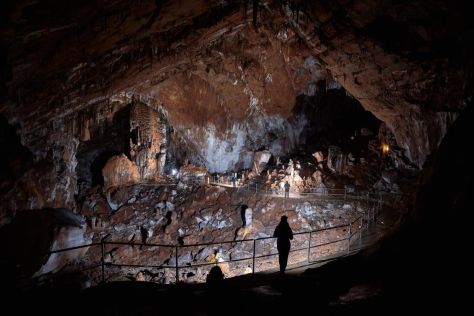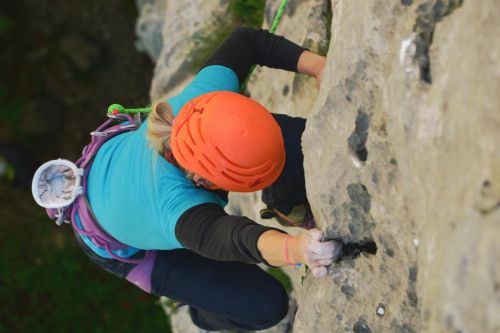The arrival of Croats in this area began in the early Middle Age. The earliest preserved traces of their presence are the chapels of St. George (Sv. Juraj) in Rovanjska and the chapel of St. Peter (Sv. Petar) in Starigrad, built in the 9th or 10th century A.D.
 Chapel of St. Peter (Sv. Petar) in Starigrad
Chapel of St. Peter (Sv. Petar) in Starigrad
Two forts - Večka kula (on the cape just east of Starigrad) and Paklarić (on top of a long-abandoned prehistoric hillfort, overlooking the entrance to Velika Paklenica gorge) – were probably erected in the late Middle Age (14th-16th century).

This era was followed by two centuries of war with the Turks. The population fled and the area at the foot of Velebit was completely abandoned. As the Turkish power began to fade, in 1671 the Venetian authorities began to populate the area of Starigrad with Bunjevacs, a Croatian population from the neighboring areas that were still under Turkish occupation. In 1700, the Turks finally retreated, and the area at the foot of South Velebit was annexed to Venetian Dalmatia.
People
The pastures and treatable land of Velebit, contained in karstic sinkholes, provided for the local population. Having adapted to the geographic and climatic environment, the residents mostly engaged in nomad stock herding, which is confirmed by mountain shepherd residences. The fact that many people stayed in mountain residences in the summertime is reflected in the ruins of numerous sacral buildings: churches, chapels, altars, holy hills and measures (mirila). The features of the area are also reflected in the traditional architectural style – namely, the cube roofs, concrete barrel-shaped roofs that have remained preserved on houses, economic facilities and mills along the stream of Velika Paklenica.
 Distinctive roof architecture
Distinctive roof architecture
There are ten old settlements inside the National Park, which are now mostly abandoned: Parići, Ramići, Kneževići, Katići, Škiljići, Jasenar, Rimenić, Jurline, Marasovići and Njive. Particularly interesting is the site Sklopina with the houses built into semi-faults.
 Sklopina
Sklopina





















